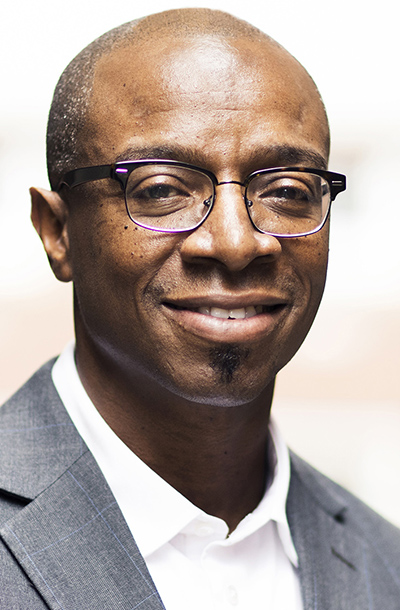
EDITOR’S NOTE: Sunday, Feb. 10, is Racial Reconciliation Sunday in the Southern Baptist Convention. Curtis A. Woods is co-interim executive director of the Kentucky Baptist Convention and assistant professor of applied theology at Southern Baptist Theological Seminary.
LOUISVILLE, Ky. (BP) — When regenerate followers of Christ discuss race relations in America in general or in the SBC, we should do so without being overly critical or biting toward one another. Ad hominem attacks only engender more heat than light. No one is edified. The apostle Paul chastised the church at Galatia to avoid “biting and devouring one another lest those in the church destroy one another” (Galatians 5:15).
I firmly believe the Gospel eradicates racist ideas and prevents all forms of avarice and victimization from poisoning our hearts. Christ gave His followers a missiological and eschatological vision of Kingdom diversity through His high priestly prayer and the prophecy of blood-bought worshipers “from every tribe, language, people and nation” bowing down before the slain lamb in adoration and praise (John 17:21; Revelation 5:9; 7:9). Simply put, biblical theology and historical truth-telling undergird distinctly Christian conversations about SBC race relations.
A prophetic statement
In 1968, a Southern Baptist racial reconciliation leader, Victor Glass, stated, “Southern Baptists will tend to become more interracial. We are going to reach out to all people. Southern Baptists will become more interracial in membership and leadership. Some of the white men coming out of the seminaries could care less about the color of the skin to whom they preach.”(1)
When Glass spoke those words to the predominantly white male-dominated evangelical denomination, racial strife in the United States was at its tipping point. African Americans had become increasingly frustrated with the de jure segregation of the Jim Crow North and South, which held on in many localities despite civil rights legislation and decisions handed down by the Supreme Court.
Voices from the religiously diverse black prophetic tradition demanded equal rights under the law. Some of these religious figures espoused liberation from the oppressive grip of American racism “by any means necessary,” which engendered fear in many hearts. Others took a different approach, believing radical love and nonviolence would expose the brutality of white supremacy with hopes of minimizing mass concern for personal safety. Those who embraced nonviolence, “love your enemies and pray for those who persecute you,” rather than the lex talionis, “an eye for an eye, a tooth for a tooth,” were not immune to ridicule in the public square.
Lamentably, some American citizens incessantly castigate the demonic and dehumanizing anthropological views of our denominational forebears without celebrating what God has done and is doing to create denominational beauty in the 21st century.
The latter-day Civil Rights Movement
The Civil Rights Movement, which arguably began in the late 1700s, was in hot pursuit of equal opportunities for black citizens in the 1950s and’60s. Many historians, sociologists, political pundits and evangelical Christians have mixed feelings about the civil rights operation in America. Yet, Southern Baptist racial reconciliation emphasis existed within the latter-day Civil Rights Movement. The phrase “latter-day Civil Rights Movement” highlights the long history of the black freedom struggle. The Civil Rights Act of 1866, for example, granted equal protection under the law for every American citizen. This legislation became legal precedent for demanding a just society based on the Constitution, the common good and Christian virtue.
Some religionists think the Civil Rights Movement was devilish insofar as the leaders sought to transform society through perceived carnal weapons such as boycotts or sit-ins. These false notions overlook analogous illustrations in Scripture to the aforesaid forms of protest. The Hebrew midwives boycotted Pharaoh’s edict to kill male Hebrew children (Exodus 1:15-22). Daniel, in opposition to King Darius, got on his knees and prayed openly to God in civil disobedience (Daniel 6:10). He antedated the famed Greensboro, N.C., lunch counter sit-ins that courageously defied injustice by well over two millennia. People of faith have executed civil disobedience against injustice throughout human history.
Civil unrest, in many cases, gave Southern Baptist leaders impetus to rethink the convention’s historic relationship to people of color. When “interest convergence” motivates societal change rather than the Gospel, we simply change the furniture in the home without dealing with the cracked structural foundation. Which is to say, a majority group that tolerates minority advancement for self-interested reasons will always clash over the meaning of situational and systemic racism. Gospel-saturated racial reconciliation exposes cultural racism without fear of corporate reprisal.
After 50 years, we can observe Victor Glass’ prediction firsthand, Southern Baptists are steadily becoming multiethnic. According to a report titled “The Many Faces of the Southern Baptist Convention” released in 2018 by the SBC Executive Committee, Ken Weathersby acknowledges that more than 20 percent of Southern Baptist churches actively involved with cooperative missions are non-Anglo congregations. Within the last 15 years, Weathersby notes, “SBC-related Native American congregations grew by 24 percent; Asian congregations by 52.3 percent; Hispanic congregations by 56.2 percent; African American congregations by 61.4 percent; and other congregational expressions (including Haitian and multiethnic) grew by 71 percent.”
Moreover, Roger S. Oldham writes in the report, “Between 1961 and 1995, the Southern Baptist Convention adopted ten resolutions expressing its desire to see ‘greater ethnic participation’ in SBC life. During those three and one-half decades, the Convention experienced significant growth in the number of non-Anglo congregations cooperating with the SBC, along with an increase in the number of ethnic-minority seminary students trained through the six SBC seminaries.”
If you prefer thinking Christianly on SBC race relations, this is a key resource to read.
(1) Victor Glass quoted in W.T. Moore, His Heart is Black (Atlanta: Home Mission Board, SBC, 1978), 31.

















